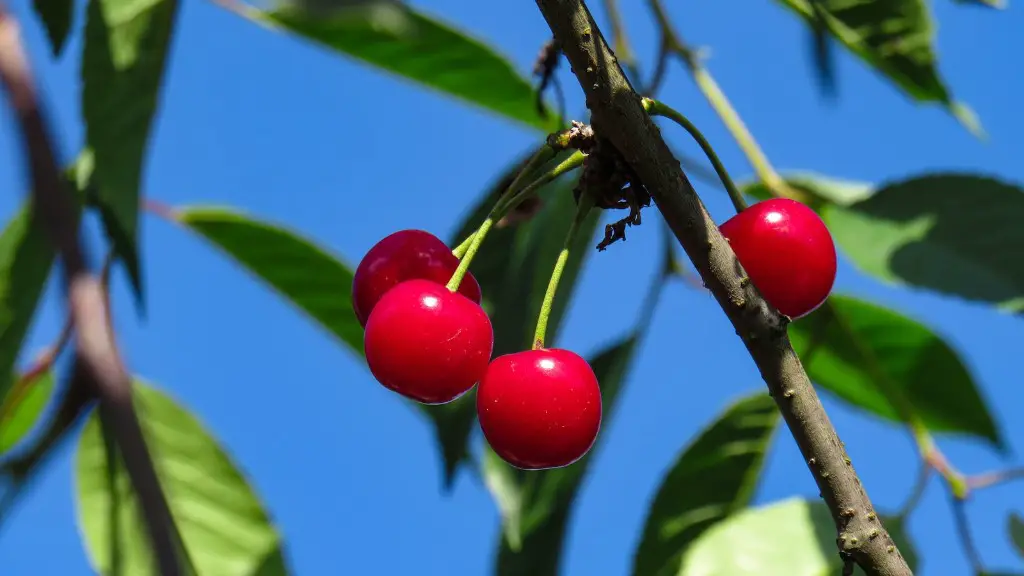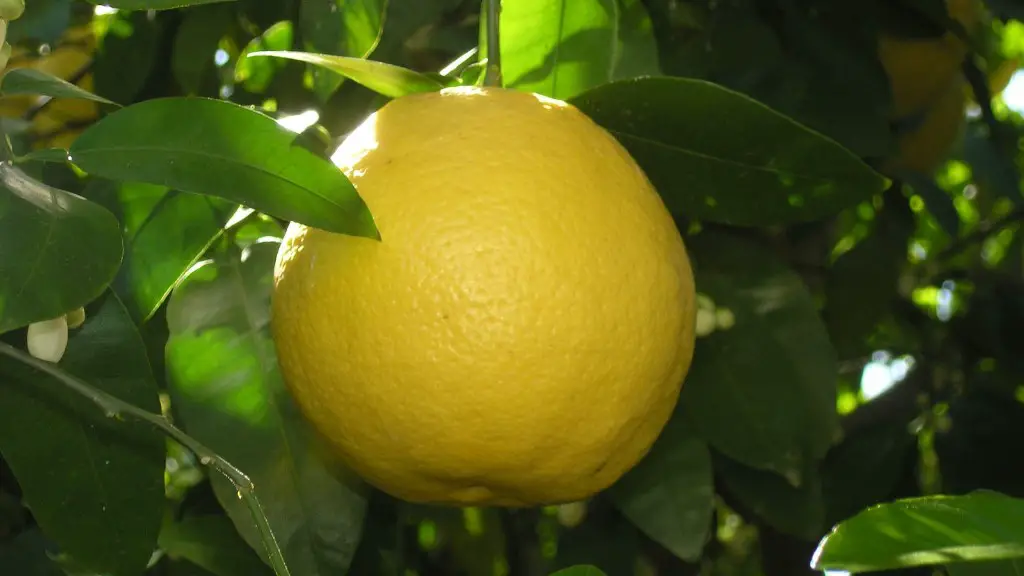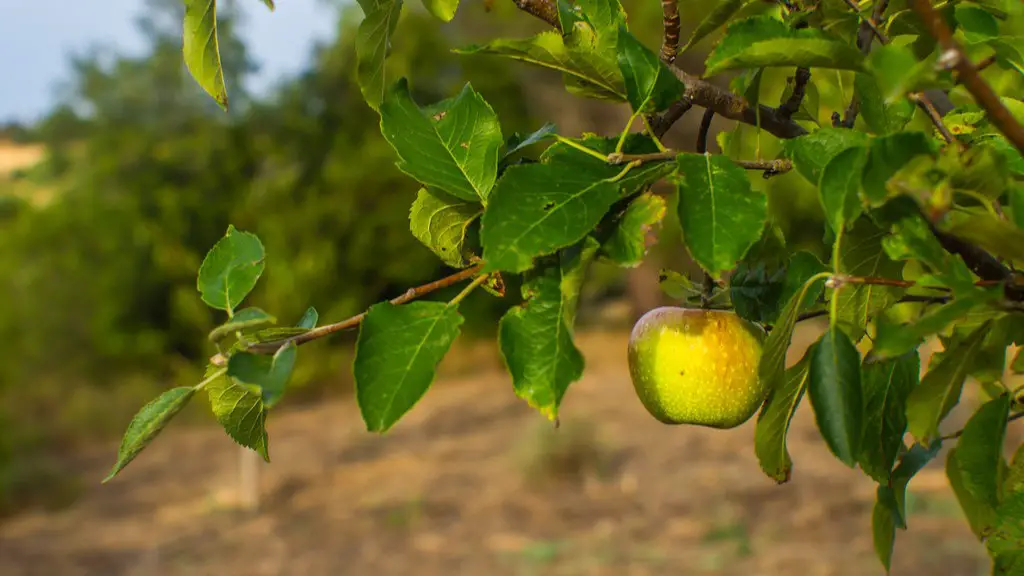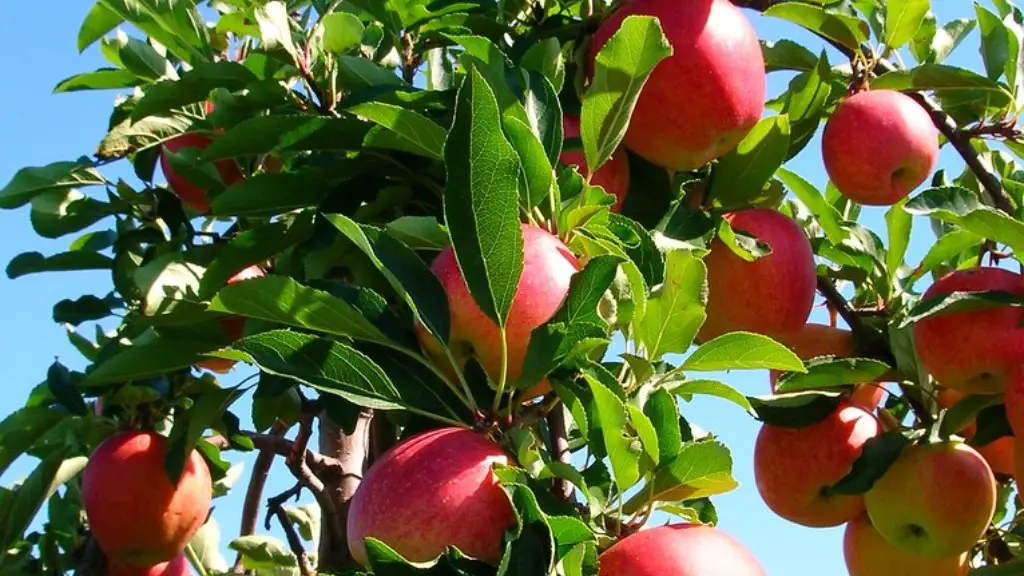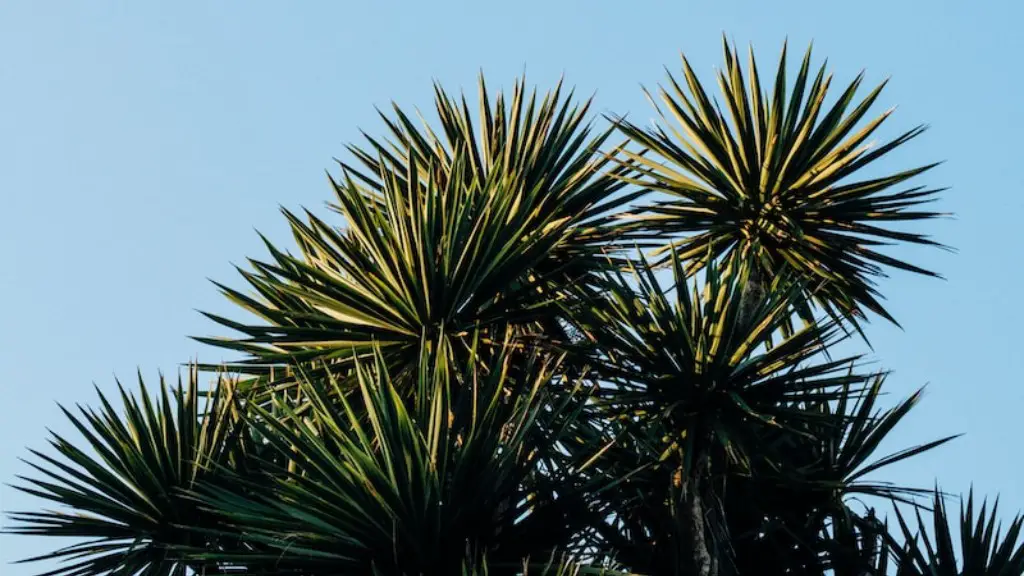The cherry tree is one of the most popular fruit trees, planted in many backyards. But which is the best cherry tree to choose? Depending on your location, the tree’s characteristics, and your preferences, the right option may vary greatly. To determine the best cherry tree for you, consider a few crucial factors.
First, consider your zone. Different cherry tree varieties are adapted for growing in different climates. Consult your local extension agent or agricultural authority to find out more about your zone and which varieties are most suitable. For example, ‘Van’ and ‘Lapins’ are well-established cold hardy varieties that thrive in northern and central parts of the United States.
Next, ask yourself what kind of fruit you want. There are several cherry cultivars that vary in flavor, color and texture. Most people prefer sweet, flavorful varieties such as ‘Bing’, ‘Lambert’, ‘Rainier’, ‘Black Tartarian’, and ‘Stella’. There are also smaller, sour types like ‘Morello’ or ‘Montmorency’, which are used in baking, jams and other recipes.
Another important factor to consider is the tree’s vigor and size. Varieties with strong growth habits—like ‘Bing’ and ‘Rainier’—are often the best choices because they produce good crops of large, juicy cherries. Some cherry trees, such as ‘Stella’, are smaller and less vigorous, but still produce good-tasting fruit.
Finally, think about the tree’s hardiness. If you live in a cold climate, choose a variety that can cope with cold temperatures and snow. In warmer climates, pick a tree that is heat-tolerant and can survive through dry summers. ‘Bing’ and ‘Stella’ are two popular choices for hot and dry conditions.
In the end, when choosing a cherry tree for your garden, pay attention to its hardness, vigor, flavor, and preferences. Consult an expert – a local horticulturist or extension agent – if you have questions and need help deciding. With proper selection and care, you can enjoy sweet, juicy cherries year after year.
Pollination
The best cherry tree to choose depends on what kind of pollination services you can provide. Most cherry trees are self-fertile, which means they can fertilize their own flowers. But some varieties, such as ‘Van’, can only produce fruit if they are cross-pollinated with a compatible variety like ‘Lapins’. If you only plan to plant one tree, it’s important to pick a self-fertile variety.
If you want an even higher yield and more consistent harvests, you may want to plant two different cherry varieties for pollination. This method produces better fruit in a shorter time frame, and it can be an attractive choice for a hobby orchard. However, if you choose to plant two varieties, make sure they bloom at the same time. This ensures that both trees are pollinated and produce fruit.
In addition, if you have space restrictions, consider a columnar cherry tree. This type of cherry tree is pruned and maintained to fit into odd-shaped spaces. While it doesn’t produce as much fruit as other varieties, it is a great choice for small yards and urban gardens.
Disease Resistance
Caring for a cherry tree can be labor-intensive, so it’s important to choose a variety that is resistant to certain diseases. Different trees are susceptible to various diseases, so it’s important to research the variety you are considering. One of the most common diseases affecting cherry trees is brown rot, which causes blossom and twig blight. The fungus develops on ripening fruit and can lead to premature fruit drop. Varieties like ‘Lambert’ and ‘Bing’ are the most resistant to brown rot.
Other diseases like powdery mildew, gray mold and crown rot are also common in cherry trees. They are caused by a variety of fungal pathogens and can be managed with fungicides and other cultural practices. But if you prefer not to use chemicals, choose a variety that is naturally resistant to these diseases. ‘Stella’, ‘Lapins’, and ‘Bing’ are all moderately to highly resistant.
Finally, consider heritage and local varieties. These varieties are adapted to the local climate, soil, and pests. They usually also have superior flavor and texture compared to many of the modern commercial varieties. These trees are invaluable in preserving rare cultivars and should be preserved for future generations.
Fertilization
Fertilizer is the best way to ensure that your cherry tree produces a good crop of tasty fruit. Over-fertilization, however, can reduce the quality of fruit and increase the risk of disease. The best way to fertilize your tree is to start with a balanced blend – one that contains nitrogen, phosphorus, and potassium – and then apply it as needed. Start with smaller amounts, and then increase as the tree grows.
Another important factor to consider is timing. Fertilize the tree in late winter or early spring, after the trees have leafed out. This helps the new leaves and fruit to develop properly. Also, avoid fertilizing in the summer – the extra nitrogen can cause late-season leaf growth that can be damaged by cold weather. Finally, avoid using fresh manure near the tree, as it can promote crown gall, a bacterial disease that affects the tree’s roots.
Most importantly, always read and follow the instructions on the fertilizer label. Incorrect amounts and application times can do more harm than good. If you’re not sure how to apply fertilizer, ask an expert or consult an extension agent.
Pruning and Training
Pruning is an important part of caring for cherry trees. It should be done during the winter or early spring, before the tree produces growth. Pruning can help the tree produce larger and juicier fruit. It also helps to reduce the risk of disease, by removing dead and diseased wood. Finally, it can also control the shape and size of the tree.
The best way to prune cherry trees is to use the central leader system. This method involves selecting a main, central stem and pruning out side branches as they emerge. Begin pruning as soon as the tree is planted, and continue pruning until the tree reaches its desired height and width. Don’t be afraid to prune heavily, as this will encourage the tree to produce lots of new growth.
Most cherry trees are self-fruitful, but you may still want to train them on a trellis or other support. This can help the tree produce a more consistent crop and make it easier to prune and harvest the fruit. However, bear in mind that some types of pruning may require a professional.
Harvesting
Cherry trees are generally ready to harvest when the fruit turns a dark red or black color, depending on the variety. The best way to check is to look inside the ripe fruit, as it should have little to no green color. When harvesting, be gentle and use scissors or clippers to cut the stem so that you don’t damage the tree. Also, avoid letting the fruit fall on the ground, as it can be easily bruised.
Most cherry trees will produce fruit for several years, but it’s important to plan ahead. If you want to ensure a good crop for the following year, consider thinning out some of the fruit in the spring. This will help ensure the tree has the energy to develop a good crop for the next season.
Finally, consider how you will store the fruit. Cherries can be kept in the refrigerator for a few days, or frozen for future use. But the best way to preserve them is to can or make jam. This will allow you to enjoy your cherry harvest all year long.
